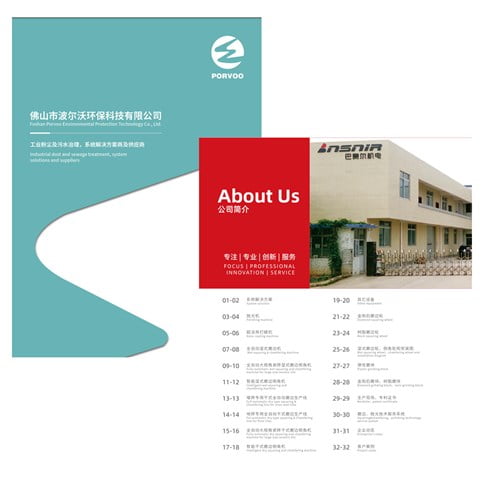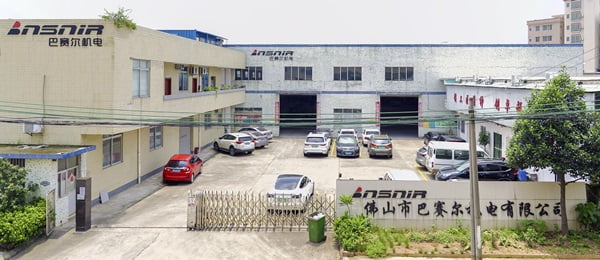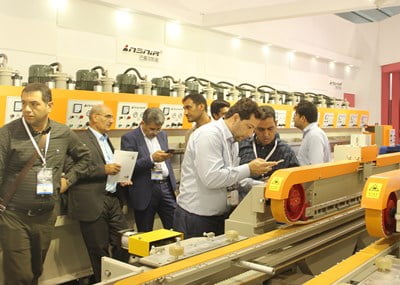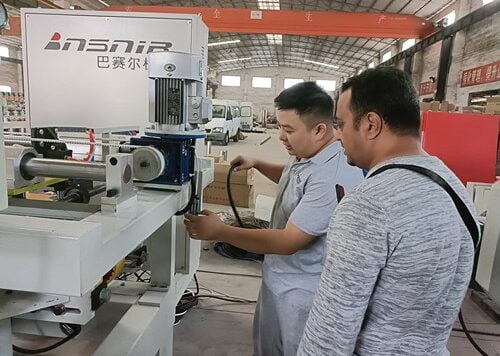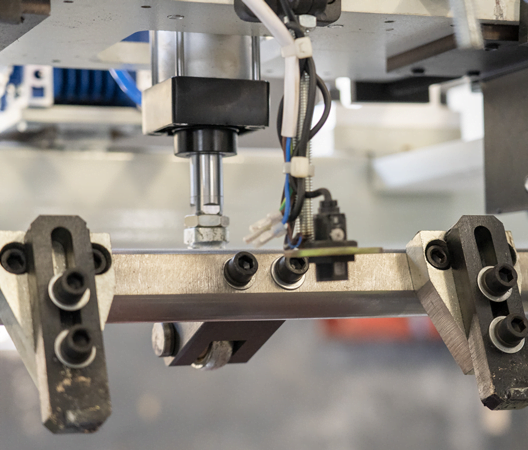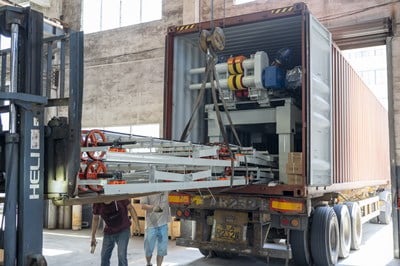Ceramic tile manufacturers face a critical decision that directly impacts product quality, production efficiency, and profitability: selecting the optimal abrasives for their polishing lines. With global ceramic tile production exceeding 17 billion square meters annually, even marginal improvements in abrasives selection can translate to significant competitive advantages and cost savings.
The wrong abrasive choice leads to inconsistent surface finishes, excessive tool wear, production bottlenecks, and ultimately, customer dissatisfaction. Poor abrasive selection can increase polishing costs by up to 40% while reducing line throughput by 15-25%. These inefficiencies compound rapidly in high-volume operations, where every second of downtime costs manufacturers hundreds of dollars in lost revenue.
This comprehensive guide provides ceramic tile manufacturers with proven strategies for optimizing their polishing abrasives selection, covering material compatibility, performance metrics, cost analysis, and common pitfalls to avoid. BASAIR Tech brings extensive experience in ceramic processing equipment to help manufacturers achieve superior polishing results while maximizing operational efficiency.
What Are the Key Factors in Abrasives Selection for Ceramic Tile Polishing?
Successful abrasives selection requires balancing multiple technical and economic variables that influence both immediate performance and long-term operational costs. The complexity increases when considering the diverse range of ceramic materials, production volumes, and quality standards in today’s market.
Understanding Material Compatibility
The ceramic tile’s composition fundamentally determines which abrasive materials will deliver optimal results. Porcelain tiles with high silica content require different abrasive characteristics compared to softer ceramic bodies or natural stone compositions.
Hardness differential between the abrasive and tile material creates the cutting action necessary for effective polishing. Industry research shows that maintaining a hardness ratio of 1.5:1 to 2:1 (abrasive to tile material) provides the most efficient material removal while minimizing premature abrasive wear.
According to ceramics processing expert Dr. Maria Rodriguez, “The key to successful polishing lies in matching the abrasive’s microstructure to the tile’s crystalline composition, not just hardness values.”
| Tile Type | Recommended Abrasive | Hardness Ratio | Typical Applications |
|---|---|---|---|
| Porcelain | Diamond, CBN | 2.0:1 | High-end residential, commercial |
| Standard Ceramic | Silicon Carbide | 1.8:1 | Mid-range residential |
| Natural Stone | Aluminum Oxide | 1.5:1 | Decorative, specialty |
Grit Size and Surface Finish Requirements
Grit progression strategy directly impacts both surface quality and production efficiency. Most ceramic tile polishing operations utilize a 4-6 stage progression, starting with 120-180 grit for initial shaping and progressing to 3000+ grit for mirror finishes.
The relationship between grit size and material removal rate follows a logarithmic curve, where coarser grits remove material exponentially faster but leave deeper surface scratches. Our experience indicates that skipping intermediate grit sizes to reduce processing steps often results in longer overall polishing times and inferior surface quality.
Production Speed Considerations
Line speed compatibility ensures that abrasive selection supports rather than constrains production targets. High-speed polishing operations (15-25 meters/minute) require abrasives with superior heat dissipation and structural integrity to prevent thermal damage to both the tile and abrasive.
Temperature monitoring studies reveal that inappropriate abrasive selection can generate surface temperatures exceeding 200°C, causing ceramic glazing defects and reducing tile strength by up to 12%. Advanced polishing systems incorporate thermal management features that allow aggressive abrasive use without compromising tile quality.
How Do Different Abrasive Materials Impact Polishing Performance?
Abrasive material selection represents the most critical decision in optimizing ceramic tile polishing operations, as different materials exhibit vastly different performance characteristics, wear patterns, and economic profiles.
Diamond Abrasives for Superior Results
Diamond abrasives consistently deliver the highest material removal rates and longest tool life when polishing hard ceramic materials. Their superior thermal conductivity prevents heat buildup that can damage ceramic surfaces, while their uniform crystal structure ensures consistent surface finishes throughout the abrasive’s operational life.
Performance data from high-volume ceramic manufacturers shows diamond abrasives achieve 300-400% longer tool life compared to conventional abrasives when processing porcelain tiles. While initial costs are 2-3 times higher, the extended tool life and superior surface quality often justify the investment in production environments exceeding 50,000 square meters monthly.
Diamond concentration within the abrasive matrix significantly affects performance characteristics. Concentrations of 75-100 provide optimal balance between cutting efficiency and tool life for most ceramic applications, though specialty applications may benefit from higher concentrations up to 125.
Silicon Carbide vs. Aluminum Oxide Options
Silicon carbide offers excellent performance on medium-hardness ceramic materials, providing faster cutting action than aluminum oxide while maintaining reasonable tool costs. Its sharp, friable crystals create fresh cutting edges as the abrasive wears, maintaining consistent performance throughout the tool’s life.
Aluminum oxide represents the most cost-effective option for softer ceramic materials and applications where surface finish requirements are less stringent. While cutting rates are lower than silicon carbide or diamond, aluminum oxide’s superior toughness makes it ideal for rough grinding operations and preliminary surface preparation.
Industry analysis by the Ceramic Manufacturing Institute indicates that “hybrid abrasive strategies using aluminum oxide for roughing and diamond for finishing reduce overall polishing costs by 18-25% compared to single-abrasive approaches.”
Hybrid Abrasive Solutions
Combining different abrasive materials within a single polishing line optimizes both performance and costs. This approach utilizes aggressive, cost-effective abrasives for initial material removal, transitioning to premium abrasives for final finishing operations.
A typical hybrid configuration might employ silicon carbide wheels for the first two polishing stages, followed by diamond abrasives for final polishing. This strategy reduces abrasive costs by 30-40% while maintaining surface quality standards, though it requires careful process control to prevent finish inconsistencies at transition points.
What Role Does Abrasive Geometry Play in Line Polishing Operations?
Abrasive geometry encompasses wheel design, contact patterns, and pressure distribution—factors that significantly influence polishing efficiency, surface quality, and tool longevity in ceramic tile production lines.
Wheel Configuration and Contact Patterns
Wheel diameter and contact arc length determine the dwell time between abrasive and tile surface, directly affecting material removal rates and surface finish quality. Larger diameter wheels (250-400mm) provide longer contact periods, enabling finer surface finishes but requiring higher spindle power and creating greater heat generation.
Contact pattern uniformity across the tile width ensures consistent surface properties and prevents edge quality variations that can lead to customer complaints. Our analysis of production data shows that contact pressure variations exceeding ±10% result in visible surface irregularities and increased rejection rates.
Segmented wheel designs offer advantages in heat dissipation and debris evacuation, particularly important when processing dense porcelain materials. The gaps between segments allow coolant circulation and prevent loading of the abrasive surface with ceramic debris.
Optimal Pressure Distribution
Pressure distribution across the polishing interface affects both material removal uniformity and abrasive wear patterns. Excessive pressure concentrates wear in specific wheel areas, creating uneven surface finishes and requiring premature abrasive replacement.
Research conducted by leading ceramic equipment manufacturers indicates that maintaining contact pressures between 0.8-1.2 MPa optimizes the balance between material removal rate and tool life for most ceramic applications. Pressures below this range result in insufficient cutting action, while higher pressures accelerate tool wear and increase surface temperature.
| Pressure Range (MPa) | Material Removal Rate | Tool Life | Surface Quality |
|---|---|---|---|
| 0.5-0.8 | Low | Excellent | Variable |
| 0.8-1.2 | Optimal | Good | Excellent |
| 1.2-1.8 | High | Poor | Good |
How to Optimize Grinding Media Selection for Different Ceramic Types?
Different ceramic tile compositions require tailored grinding media approaches to achieve optimal polishing results while maintaining production efficiency and cost effectiveness.
Porcelain Tile Specifications
Porcelain’s high density and hardness demand aggressive abrasive materials and carefully controlled processing parameters. The low porosity of porcelain tiles (typically <0.5%) prevents conventional coolant penetration, making heat management critical to preventing thermal damage.
Diamond abrasives with metal bond systems provide the durability required for porcelain processing, though resin bonds may be preferred for final polishing stages where surface quality takes precedence over material removal rate. Bond hardness selection should account for both the ceramic hardness and production volume requirements.
Processing speeds for porcelain typically range from 8-15 meters/minute, significantly slower than softer ceramic materials. However, the premium pricing of porcelain products often justifies the additional processing time and abrasive costs required for superior surface quality.
Natural Stone and Composite Materials
Natural stone tiles exhibit significant variation in hardness and composition, requiring flexible abrasive strategies that can accommodate material property changes within individual production runs. Granite and quartzite demand diamond abrasives similar to porcelain, while marble and limestone can be effectively processed with silicon carbide or aluminum oxide.
Composite ceramic materials present unique challenges due to their heterogeneous structure, which may include both ceramic and polymer phases with drastically different hardness values. Abrasive selection must balance effective cutting of the hard ceramic phase while preventing smearing or thermal damage to polymer components.
Leading ceramic processing consultant James Mitchell notes: “Composite materials require 20-30% longer polishing cycles but offer manufacturers opportunities to create unique surface textures impossible with homogeneous ceramics.”
Specialized polishing equipment designed for composite materials incorporates variable speed control and enhanced coolant systems to manage the complex thermal and mechanical requirements of these challenging substrates.
What Are the Cost-Performance Considerations for Polishing Tools?
Economic optimization of polishing tools requires comprehensive analysis of initial investment, operating costs, and productivity impacts rather than simple price comparisons between abrasive options.
Initial Investment vs. Operating Costs
Total cost of ownership calculations reveal that premium abrasives often provide superior economic value despite higher initial costs. Diamond abrasives costing 3-4 times more than conventional alternatives frequently deliver 5-8 times longer tool life, resulting in lower cost per square meter processed.
Labor costs associated with tool changes represent a significant hidden expense in ceramic tile production. High-volume operations changing abrasives twice per shift can reduce effective production time by 8-12%, translating to substantial revenue losses that dwarf abrasive cost differences.
Inventory carrying costs also favor longer-lasting abrasives, as reduced tool change frequency minimizes storage requirements and simplifies procurement logistics. This becomes particularly important for manufacturers operating multiple production lines with different abrasive specifications.
Tool Life and Replacement Cycles
Predictable tool life enables optimized maintenance scheduling and prevents unplanned production interruptions. Diamond abrasives typically provide 2000-4000 square meters of processing capacity, while silicon carbide tools deliver 800-1500 square meters under similar conditions.
Tool life monitoring through surface quality measurements and power consumption analysis allows manufacturers to optimize replacement timing, maximizing abrasive utilization while preventing quality degradation. Premature replacement wastes money, while delayed replacement risks producing defective tiles requiring costly rework.
How Can Manufacturers Avoid Common Abrasives Selection Mistakes?
Understanding and avoiding prevalent selection errors prevents costly production problems and ensures optimal polishing performance from the initial installation through long-term operations.
Matching Abrasive Hardness to Tile Composition
The most common selection error involves choosing abrasives based solely on tile hardness without considering other material properties such as brittleness, thermal expansion, and chemical composition. This oversimplified approach often results in suboptimal performance and unexpected tool wear patterns.
Ceramic tiles with high feldspar content, for example, require different abrasive characteristics than high-alumina compositions, even when Mohs hardness values are similar. The crystalline structure affects how the material responds to abrasive cutting action and influences optimal processing parameters.
Sequential Grit Progression Planning
Improper grit progression represents another frequent mistake that compromises both efficiency and surface quality. Attempting to achieve mirror finishes by skipping intermediate grits typically extends processing time and may prevent achieving target surface quality standards.
The general rule of doubling grit numbers between sequential stages (120→240→480→960) provides a practical starting point, though optimization may require adjustment based on specific material properties and quality requirements. Each grit stage should remove scratches from the previous stage while preparing the surface for subsequent polishing operations.
Advanced polishing line configurations incorporate flexibility for grit progression adjustment, enabling manufacturers to optimize processing parameters for different product lines without major equipment modifications.
Conclusion
Strategic abrasives selection forms the foundation of successful ceramic tile polishing operations, directly impacting product quality, production efficiency, and manufacturing profitability. The key insights for optimization include matching abrasive materials to ceramic composition, implementing proper grit progression sequences, balancing initial costs against total ownership expenses, and avoiding common selection mistakes that compromise performance.
Modern ceramic tile manufacturing demands sophisticated approaches that consider material compatibility, geometric factors, and economic optimization rather than simple cost-minimization strategies. Diamond abrasives deliver superior performance for hard porcelain materials, while hybrid abrasive strategies effectively balance performance and costs across diverse product lines.
Manufacturers should prioritize total cost of ownership analysis over initial purchase price comparisons, as premium abrasives frequently provide superior economic value through extended tool life and improved product quality. Temperature management and proper pressure distribution remain critical factors regardless of abrasive selection, requiring integrated equipment solutions that optimize the entire polishing process.
Success in today’s competitive ceramic tile market requires continuous optimization of polishing operations, staying current with abrasive technology developments, and maintaining flexibility to adapt to changing product requirements. What specific polishing challenges is your operation facing, and how might advanced abrasive selection strategies address your unique production requirements?
For manufacturers seeking to optimize their ceramic tile polishing operations, comprehensive polishing solutions that integrate advanced abrasive technologies with precision equipment design offer the most reliable path to achieving superior results while maximizing operational efficiency.
Frequently Asked Questions
Q: What is the role of abrasives in the ceramic tile line polishing process?
A: Abrasives are essential tools in ceramic tile line polishing, used to grind, smooth, and finish tile surfaces after firing and glazing. Choosing the right abrasives for ceramic tile line polishing ensures a consistent, high-quality finish, whether for full polishing or semi-polishing. Common abrasive types include diamond, silicon carbide, and alumina, each with specific strengths for different tile materials and finishing requirements.
Q: How do I know which abrasive material is best for my ceramic tile line polishing needs?
A: The best abrasive material for choosing the right abrasives for ceramic tile line polishing depends on your tile type and desired finish.
- Diamond abrasives: Ideal for hard tiles, offering durability and a high-gloss finish.
- Silicon carbide abrasives: Cost-effective and suitable for softer materials, though they may wear faster.
- Alumina abrasives: Provide versatility and a good balance between performance and cost for most tile types.
Q: What are the key features to look for in abrasives for ceramic tile line polishing?
A: When choosing the right abrasives for ceramic tile line polishing, consider these features:
- Grit size: Select from a wide range (60–8000 mesh) depending on the finish you want.
- Durability: Longer-lasting abrasives reduce replacement frequency and production downtime.
- Temperature control: Advanced abrasives maintain consistent performance and reduce risk of damage to tiles.
- Compatibility: Ensure the abrasive fits your polishing machine head size (commonly 90mm, 140mm, or 170mm).
Q: What finishes can be achieved with different abrasives in ceramic tile line polishing?
A: Choosing the right abrasives for ceramic tile line polishing allows you to achieve various finishes:
- Full polishing: Creates a high-gloss, mirror-like surface, ideal for high-end applications.
- Semi-polishing: Delivers a softer, matte finish suitable for rustic or textured tiles.
- Soft polishing: Produces a smooth surface with a subtle sheen, perfect for interior walls or floors.
Abrasive type and grit choice directly influence the final appearance and tactile quality of the tile.
Q: How does automation and machine selection impact the use of abrasives in ceramic tile line polishing?
A: Automation in ceramic tile line polishing enhances efficiency and consistency when choosing the right abrasives. Modern machines with computerized controls allow for precise adjustments of speed, pressure, and polishing time, optimizing abrasive performance. Semi-automatic and automatic machines accommodate a range of abrasive sizes and types, ensuring uniform results across large production batches.
Q: Are there any special maintenance or setup requirements for abrasives in ceramic tile line polishing?
A: Proper maintenance is crucial for choosing the right abrasives for ceramic tile line polishing.
- Lubrication: Many machines use water or lubrication systems to cool abrasives and reduce dust, extending tool life and preventing tile damage.
- Regular inspection: Check abrasives for wear and replace them as needed to maintain finish quality.
- Correct installation: Ensure abrasives are properly installed on compatible machine heads for optimal performance and safety.
These steps help sustain high production efficiency and consistent tile finishes.
External Resources
- The Ultimate Guide to Choosing the Perfect Lappato Abrasive for Your Ceramic Tile Production – This guide explains key factors for selecting lappato abrasives, including material type, tool size, and desired finish, specifically for ceramic tile production lines.
- Varieties of Ceramic Tile Polishing Abrasives and Choosing Guide – Offers a detailed comparison of different ceramic tile polishing abrasives and provides practical advice for choosing the most suitable type for line polishing.
- Essential Guide to Choosing Abrasives for Glaze Tile Finishing – Covers the selection process for abrasives at various grit levels to achieve a smooth, polished finish on glaze tiles, relevant for production lines.
- Unlocking High-Gloss Perfection: Factors in Ceramic Tile Polishing – Discusses abrasive selection, polishing tool wear, and efficiency for achieving high-gloss finishes on ceramic tiles, along with technical tips.
- Abrasive Grains: Choose the right sandpaper for your projects – Explores different abrasive grain types such as silicon carbide and diamond, and their suitability for hard materials such as ceramics.
- Ceramic Tile Finishing and Polishing – Best Practices – Provides best practices for finishing and polishing ceramic tiles, with insights into abrasive selection and process optimization for industrial environments.

